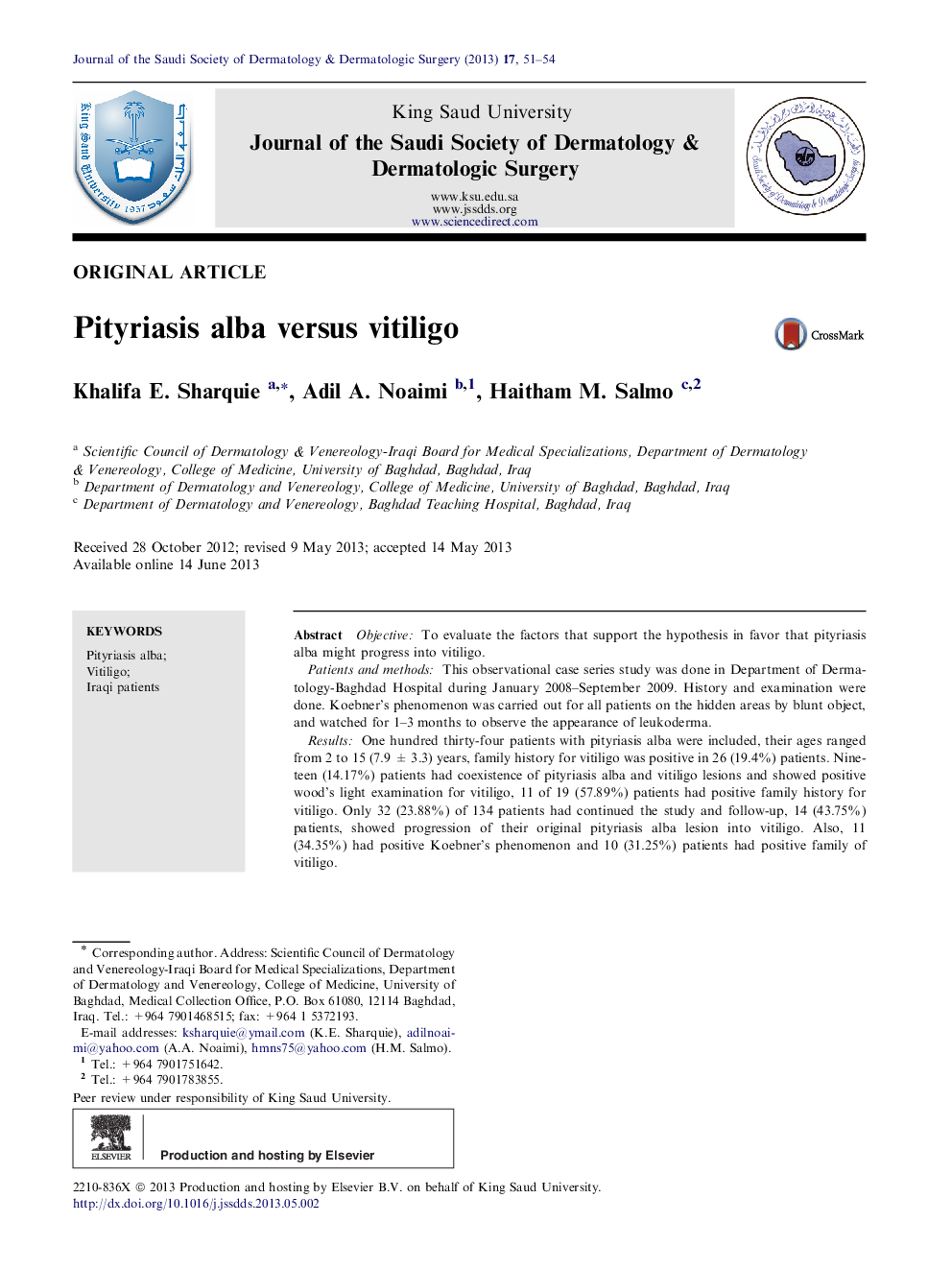| Article ID | Journal | Published Year | Pages | File Type |
|---|---|---|---|---|
| 3220379 | Journal of the Saudi Society of Dermatology & Dermatologic Surgery | 2013 | 4 Pages |
ObjectiveTo evaluate the factors that support the hypothesis in favor that pityriasis alba might progress into vitiligo.Patients and methodsThis observational case series study was done in Department of Dermatology-Baghdad Hospital during January 2008–September 2009. History and examination were done. Koebner’s phenomenon was carried out for all patients on the hidden areas by blunt object, and watched for 1–3 months to observe the appearance of leukoderma.ResultsOne hundred thirty-four patients with pityriasis alba were included, their ages ranged from 2 to 15 (7.9 ± 3.3) years, family history for vitiligo was positive in 26 (19.4%) patients. Nineteen (14.17%) patients had coexistence of pityriasis alba and vitiligo lesions and showed positive wood’s light examination for vitiligo, 11 of 19 (57.89%) patients had positive family history for vitiligo. Only 32 (23.88%) of 134 patients had continued the study and follow-up, 14 (43.75%) patients, showed progression of their original pityriasis alba lesion into vitiligo. Also, 11 (34.35%) had positive Koebner’s phenomenon and 10 (31.25%) patients had positive family of vitiligo.ConclusionsThis study confirmed that pityriasis alba might change into vitiligo by following findings: close association between pityriasis alba and vitiligo, high positive family history of vitiligo among patients with pityriasis alba, high percentage of pityriasis alba progressed to vitiligo and Koebner’s phenomena had a high frequency among patients with pityriasis alba.
